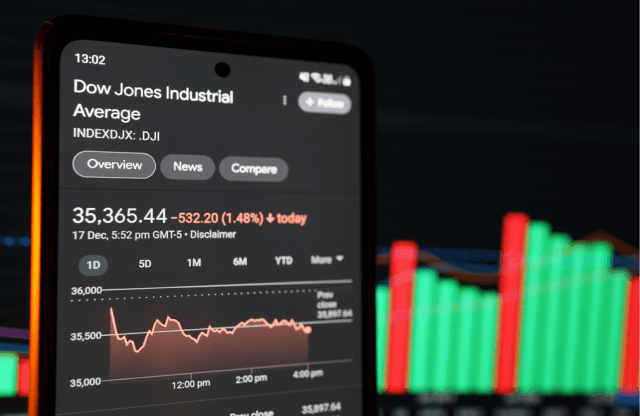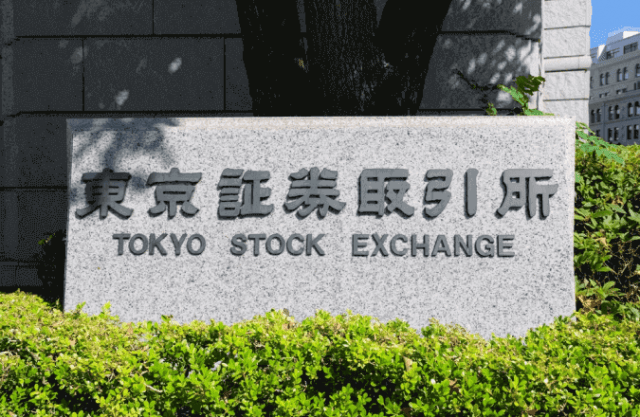How to trade the France 40 index: a complete guide

Find out about the France index and how to trade it, including France 40 trading hours, the France 40 companies that make up the index, and more.
What is the France 40?
The France 40 is a leading French stock index and a vital indicator of the performance of the French stock market.
It comprises the 40 companies with the highest market capitalisations trading on the Euronext Paris, a key French stock exchange. These companies represent a broad array of industries, and the France 40 is generally understood to represent the economic health of France as a whole.
As a key benchmark for the French market, the index plays a crucial role not just domestically but also in the European financial landscape. It is one of the major indices of Euronext, a pan-European stock exchange group that also has exchanges in Belgium, Portugal, the Netherlands, Ireland, and Norway.
France 40 performance history
The France 40 launched on 31 December 1987, with a base value of 1000. At the time, this was equivalent to a market cap of 370,437,433,95.70 French francs.
Starting the 21st century near the peak of the dot-com bubble, the index experienced a sharp decline as the bubble burst. Recovery was then hindered by the global financial crisis of 2008, which saw the France 40 drop significantly, reflecting the severe economic downturn and the ensuing European debt crisis.
The following years marked a gradual recovery, driven by central bank interventions and economic stimulus measures across Europe. The index showed resilience and modest growth until it faced the challenges of the COVID-19 pandemic in 2020. However, the post-pandemic period saw a swift recovery, thanks to robust fiscal support and vaccination rollouts that helped boost the market.
As of 2023, the France 40 has generally trended upwards, reaching new highs and showcasing the underlying strength and adaptability of the French economy.
Past performance is not a reliable indicator of future results.
France 40 trading hours
The France 40 is generally tradeable during the opening hours of the Euronext Paris, which is open Monday-Friday at the following times:
-
Pre-market trading: 7.15am-9pm (CET)
-
Regular trading: 9am-5.30pm (CET)
-
Post-market trading: 5.35pm-5.55pm (CET)
With Capital.com, you can trade our France 40 CFD market – which tracks the price of the France 40 – Monday to Friday, from 12.15am-8pm (UTC). Check our market opening times for more information.
List of France 40 companies
Companies in the France 40 are selected based on their market capitalisation and liquidity, ensuring they are among the largest and most actively traded on the Euronext Paris.
Some prominent companies listed on the France 40 include:
-
LVMH (Moët Hennessy Louis Vuitton), renowned global leader in luxury goods.
-
TotalEnergies, a major player in the global energy sector.
-
Sanofi, an influential name in the pharmaceutical industry.
-
BNP Paribas, one of the largest banking institutions in Europe.
-
Airbus, a prominent force in the aerospace industry.
The composition of the France 40 is reviewed quarterly by the Euronext Indices Steering Committee, to ensure that the index accurately reflects the market. Adjustments are typically made after trading ends on the third Friday of March, June, September, and December.
How to trade the France 40
Placing a trade on the France 40 enables you to gain exposure to the top 40 companies listed on the Euronext Paris – a major French stock exchange – in a single trade. Not only does this enable you to take a view on the French economy as a whole, but it can also diversify your portfolio across a range of sectors.
However, since the France 40 is an index, you can’t buy or sell it like a share in a company. To trade on its price, you’ll need to use a derivative product like a CFD.
A derivative product is so called because it derives its price from the underlying market – in this case, the France 40. If you want to trade on the France 40 with Capital.com, you could use our France 40 CFD market, which tracks the index’s price.
It’s important to remember that when you trade the France 40 using CFDs, you won’t actually own any assets. You’re simply opening a contract with us, to exchange the difference in the value of the trade between the open and close of the contract.
Trading CFDs on the France 40 opens up some options that aren’t available when buying or selling an asset outright. Firstly, you’re able to trade on falling prices – known as ‘going short’ – as well as rising. You’re also able to trade using leverage, which means that you can open a comparatively large trade for a fraction of its true value. This deposit is known as ‘margin’.
It’s important to remember that alongside these advantages, leverage can also lead to large, fast losses as well as gains. CFD trading is complex and high-risk, and you should make sure that you’re comfortable with CFDs, your chosen market and the risks before you trade. Luckily, you can find out much of what you need to know with our CFD trading guide.
FAQs
Why is the France 40 important to traders?
The France 40 is used by traders worldwide to assess market conditions, allocate assets, and benchmark performance. Stocks in the France 40 are selected based on market capitalisation and liquidity, and the index is reviewed quarterly to ensure it accurately reflects the most influential sectors of the French economy.
Given its prominence, the France 40 is not only a barometer for the economic environment in France but also serves as a bellwether for European economic trends. The movements in this index are closely watched by financial analysts, institutional investors, and policymakers aiming to understand market dynamics or guide economic policy. For those looking to trade the French market, understanding the composition and fluctuations of the France 40 is essential for making informed decisions.
What affects France 40 prices?
The France 40 index, which represents France’s top 40 companies by market capitalisation, is influenced by various factors.
Economic data, including GDP growth, unemployment rates, and consumer spending, significantly impacts the index by shaping overall economic health and investor sentiment. Furthermore, monetary policies from the European Central Bank, such as interest rate adjustments and fiscal stimulus measures, can affect the France 40 by influencing borrowing costs and economic activity.
Global economic conditions also play a critical role, given France's economic integration within the Eurozone and the wider world. Political stability and government policies on trade, taxation, and regulation within France and across Europe can sway the index's performance.
Additionally, sector-specific changes, such as fluctuations in commodity prices or technological advancements, can lead to notable shifts in the France 40, reflecting its composition of companies from diverse industries.
What is the France 40?
The France 40 is the name of our tradeable CFD market on the France 40 index. The France 40 price you see with us tracks the price of the underlying France 40, enabling you to take a long or short position on the index.
Visit our other complete guides

How to trade Dow Jones
